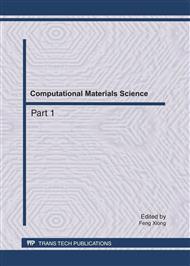[1]
ZENG Qingyuan, YANG Ping. The"Set-in-Right- Position"Rule for Formulating Dynamic System Matrix and The Finite Element Method of Truss Section for Spatial Analysis of Truss Girder [J]. Journal of the China Railway Society, 1996, 8(2): 48-59.
Google Scholar
[2]
YANG Shiruo. Stiffness Analysis of Deck Truss Girder Bridge of Steel [J]. Journal of Central South University of Forestry and Technology, 2010, 30(2): 103-106.
Google Scholar
[3]
Xiang j, Li DJ, Zeng QY. Simulation of Spatially Coupling Dynamic Response of Train-Track Time-Varitant System[J]. Journal of Central South University of Technology, 2003, 10(3): 226-230.
DOI: 10.1007/s11771-003-0014-x
Google Scholar
[4]
ZENG Qingyuan. XIANGJun. LOU Ping. Fundamental Problems in Calculation of Transverse Vibration of Train-bridge and Train-Track Time-Track Time-Varying System and Theory of Energy Random Analysis for Train Derailment [J] . China Railway Science, 2002, 23(1): 1-10.
DOI: 10.1076/vesd.41.2.129.26499
Google Scholar
[5]
YANG Shi-ruo Vehicle-Bridge Vibration Analysis of Continuous Truss Girder Bridge by Mode Method [J]. Journal of Central South University of Forestry and Technology, 2010, 30(8): 120-124.
Google Scholar
[6]
XIANG JUN, ZENG Qingyuan, LOU Ping. Further Discussion on the Energy Random Analysis of Train Derailment[J]. China Railway Science, 2002, 23(2): 26-32.
Google Scholar
[7]
GUO Wenghua, ZENG Qingyuan. Calculation And Analysis Of Spatial Vibration For deck steel plate girder bridges[J]. Journal of Vibration and shock, 2002, 21(1), 79-82.
Google Scholar
[8]
GUO Wenhua, ZENG Qingyuan. Calculation And Analysis Of Spatial Vibration For through steel plate girder bridge[J]. Journal of vibration and shock, 2003, 22(3): 1-5.
Google Scholar
[9]
YANG Shiruo. Lateral Rigidity Analysis of Bridge Composed of Arch and Truss Structural System[J]. Journal of Central South Forestry University, 2006, 26(3): 94-97.
Google Scholar
[10]
LUO Hao, GUO Xiangrong. Coupled Vibration Analysis Between a Long-span x-style arch bridge and a train [J]. Journal of vibration and shock, 2008, 27(2): 147-149.
Google Scholar


